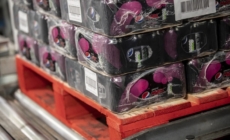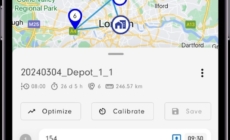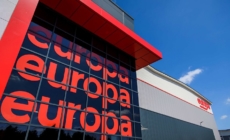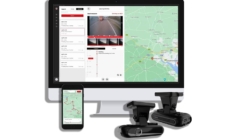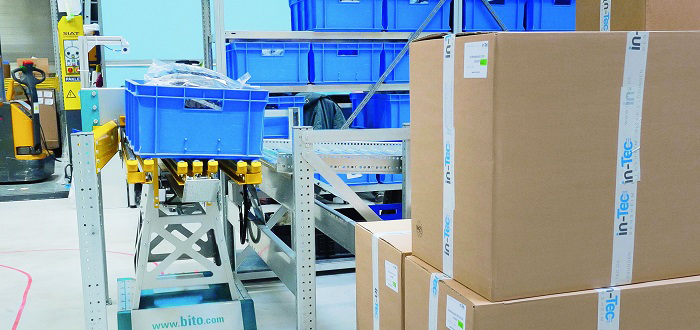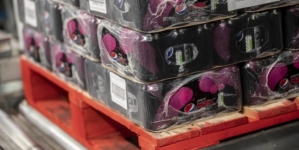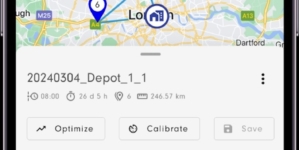-
Delivery management platform, Scurri topped over €12 billion in Gross Merchandise Value (GMV) in the total value of shipments processed in 2023 - 2 days ago
-
Britvic reaffirms partnership with LPR - 2 days ago
-
Geo2 routes for the planet by transforming delivery - April 9, 2024
-
Kammac Supports Nimble’s Expansion into 500 Tesco Stores - April 5, 2024
-
Axiom Sustainability Software launches groundbreaking Social Value Calculator - April 4, 2024
-
Change to minimum wage and its impact on logistics - April 3, 2024
-
PARKSAFE GROUP TEAMS UP WITH QUECLINK WIRELESS SOLUTIONS IN FLEET TECHNOLOGY PARTNERSHIP - March 27, 2024
-
Facing shocking levels of violence at work – yet not paid enough to live on: 57% of UK retail staff say their wages barely cover basic expenses, despite many working more hours than ever - March 26, 2024
-
Bridgestone proving the worth of its Duravis Van tyre through academic study - March 25, 2024
-
Fleetmaxx Solutions announces Vanaways partnership - March 25, 2024
BITO’s LEO ready for productive intralogistics.
Having passed its test phase following its launch with flying colours, BITO’s LEO Locative driverless internal transport system is now in production as the simplest available AGV (Automated Guided Vehicle) on the market, because unlike other AGVs, LEO does not require an infrastructure or complex installation. This opens up the possibilities and advantages of robots to a broader range operations.
Edward Hutchison, Managing Director of BITO Storage Systems said: “LEO is an affordable, simple, yet productive robotic intralogistics solution, which is now ready to help ecommerce retailers, manufacturers and other logistics operations gain competitive edge. You can see how at BITO’s Experience centre in Nuneaton, which is now operating a demonstration system.”
Able to carry containers and boxes weighing up to 20 kg, with LEO users need only lay out a visible track on the floor for the AGV to follow. Additional special markings ensure the system always knows where it is and thus guides it reliably to all targets. The visual tracks and markings are easy to change or even completely remove so that new tasks can be set up in no time. LEO’s patented transfer concept means it can simply follow the track through a hand-over station, deposit its container and collect the next – all without any electronic aids or complex pneumatics.
The innovative system is well suited to a range of applications across logistics, manufacturing and retail operations. Simple A to B tasks might include connecting two machines, a storage area with a production line or perhaps finished goods back to storage. In a logistics operation it can take bins between order picking stations. Other tasks might include transporting items that need to go to testing or the quality control desk, collecting empty bins and containers and transporting returns. In retail it can transport items from Goods In straight to the shelves of a supermarket or, in ecommerce fulfilment, it can transport items or orders from an automated mini-load system to a packaging station.
LEO Locative is available with three track options: Leo Flex is a low-cost option suited to temporary situations and is a good place to start or test the system. A mid-range option is Leo Robust, which allows permanent use in a standard, forklift-free environment, where floors will be cleaned occasionally. This might include small fulfilment centres and warehouses or high-tech manufacturing operations. For permanent use in tougher environments there is a third option: LEO Ultra. This sustains regular cleanings and works well in areas where forklift trucks also operate.
Businesses can also take a stepped approach to growing their LEO system. Using just the LEO unit itself as a first, affordable step for easy ‘A to B’ tasks such as transporting a bin from one machine, picking station or workplace to another, or collecting bins from a number of workplaces and bringing them to a central location. The next step up is to add transfer stations. This makes the jobs already described easier because staff need not wait for LEO to arrive to pick up a container. Applications with a higher turnover will want to add roller conveyors. This creates a buffer and can connect a transfer station to the work location, which may often be several metres away. A final step is to create dynamic targets for LEO by adding a tablet to a handover station. This is ideal for distributing bins from a central point, such as a vertical lift or storage, to work locations. LEO’s abilities will be broadened further as BITO develops further ‘smart’ features.
Edward Hutchison concluded: “By offering a flexible intralogistics solution through a stepped approach that can be scaled to meet business requirements LEO gives companies a great opportunity to get ahead in the robot race.”



